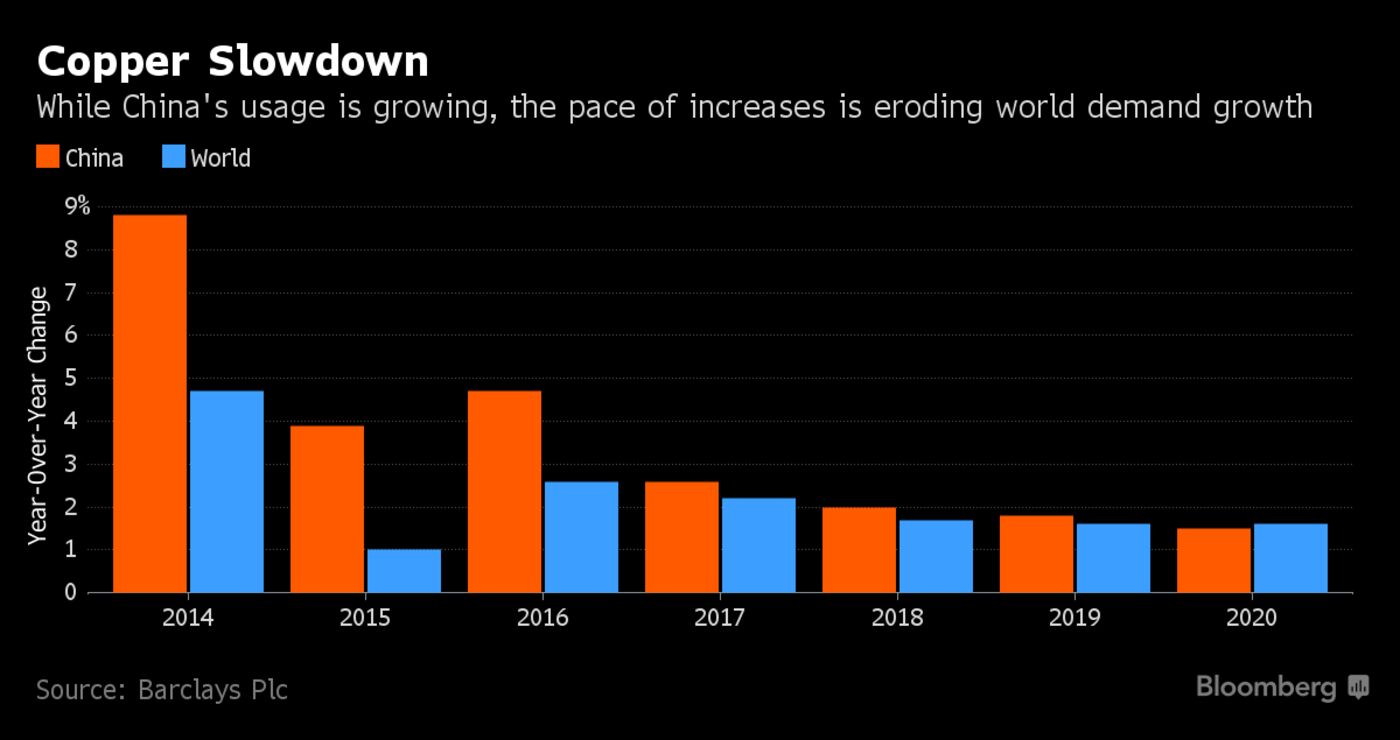Categories:
Base Metals
/
Energy
/
General Market Commentary
Topics:
General Base Metals
/
General Energy
/
General Market Commentary
From Tesla Cars to Underwear, Metal Makers Seek New Markets
-
Weaker China expansion forcing miners to look for new products
-
Developing uses to supplement sales to builders, manufacturers
The world’s biggest mining companies would like you to put more zinc in your zucchini and copper in your socks and dental floss.
While builders and manufacturers remain the biggest metals users, producers are confronting the end of a Chinese industrial boom that fueled surging global demand and prices. For more than a decade, the country dominated markets as it sucked up raw materials to build factories, homes and power lines. Now, with the industrial engine cooling, mine owners are looking for new uses to spur sales like in fertilizer, electric-car batteries and salmon cages.
“Traditional demand isn’t going to fall off a cliff,” said Paul Gait, an analyst at Sanford C. Bernstein Ltd. in London. “But it’s true that no one wants to hear about industrial production growth or Chinese cement demand anymore.”

Mining companies have toyed with exotic uses for years, but the search took on new urgency as the economy began to mature in China, the world’s biggest buyer of metals. This year, the country will have its slowest growth in copper use in a decade, Barclays Plc analysts said last month. Base metals including aluminum and nickel are heading for their first quarterly decline in more than a year. In May, Moody’s Investors Service downgraded China’s sovereign debt, sparking concern that tighter credit will hurt smokestack industries.
Fixed asset investment trailed estimates last month as the country’s property market cooled and the country sought to rein in credit, data showed Wednesday.
China consumed almost half of the world’s refined copper in 2014 as the country’s demand surged 8.8 percent from a year earlier, Barclays estimates. Since then growth has been slowing, and by 2020 the bank estimates China usage will increase just 1.5 percent. The economy that was growing at double-digit rates through most of the 2000s has slowed every year since 2010 to about 6.7 percent last year, data compiled by Bloomberg show.
That’s forcing company executives to focus on ways to bolster future growth.
“There is a huge opportunity for metals such as copper, from developing batteries to store renewable energy, to the copper motor rotor used” in Tesla Inc. electric vehicles, said Robert Dwyer, associate director of environment at the Copper Alliance.
Copper’s ability to kill microorganisms is a selling point for new household and industrial products, which could boost demand for the metal by as much as 1 million metric tons a year, expanding annual usage by 20 million tons over the next two decades, according to data from Bernstein. Global demand for all uses last year was about 23.2 million tons, according to Barclays.
New Uses
Purdue University in Indiana is purchasing weight-lifting equipment coated with the metal for a new athletic facility scheduled to open later this year. The goal is to reduce instances of flu and viral infections, said Justin Lovett, a Purdue football director. Cages lined with copper are being used on salmon farms in Chile, Japan, Canada, Australia and Norway to fight the spread of bacteria, said Ricardo Benavides, technical director at EcoSea Farming, which produces the cages in Chile.
Codelco, Chile’s state-owned mining company and the world’s largest copper producer, has promoted using the metal in hospitals, airports and even socks -- 1.4 million pairs sold last year in Chile. The company has invested about $10 million in new applications over the last five years, according to Sebastián Carmona, interim head of Codelco’s technology arm.
The mine owner also has encouraged innovation with $50,000 grants to entrepreneurs, including antibacterial baby clothes, dental floss with copper nano-particles and a copper-based material that can be used for 3D printing of orthopedics.
New uses are also being developed for aluminum. Arconic Inc., a maker of aluminum parts for cars and planes, is investing in facilities to support the use of metals by three-dimensional printing machines, which use computer software to manufacture products.
3-D Printing
After a slow start, usage of aluminum is growing in 3-D printing, along with titanium, cobalt and chrome, as the technology moves products out of testing and into commercial use in industries like aerospace, said Terry Wohlers, the founder of industry consultant Wohlers Associates in Fort Collins, Colorado.
About $542.2 million of 3-D printers for metals were sold last year, or 9 percent of all sales, Wohlers estimates. By 2022, sales will increase more than fourfold to $26 billion, and with machines devoted to metals growing faster than the industry overall, he said.